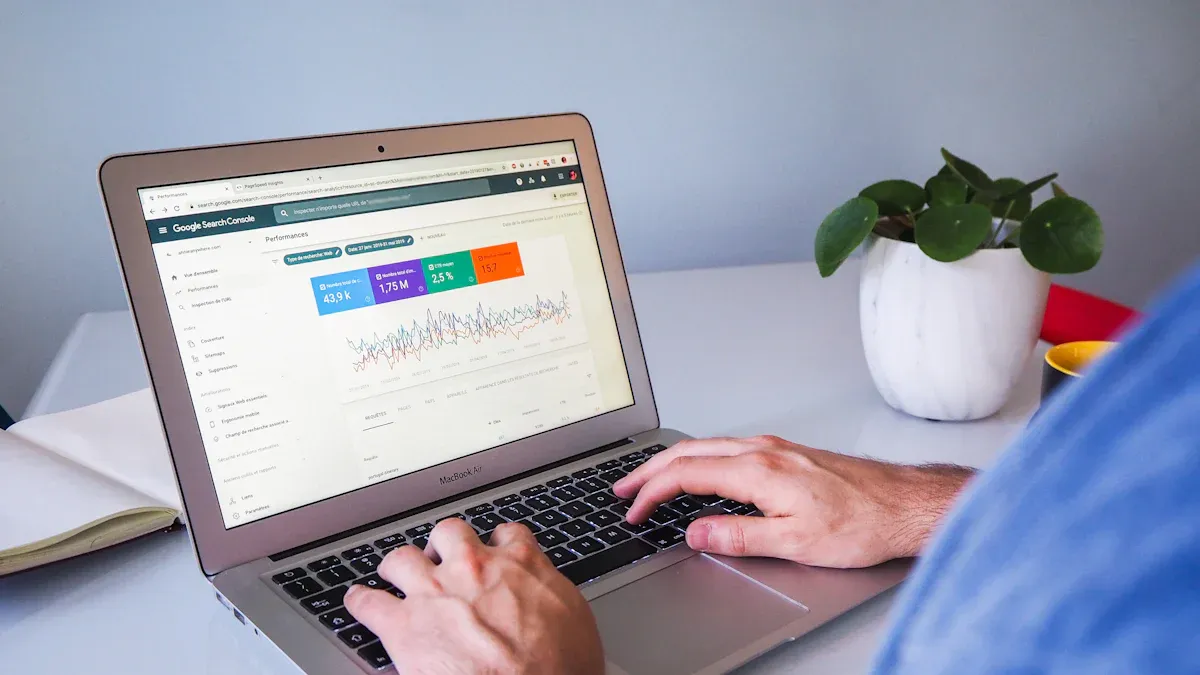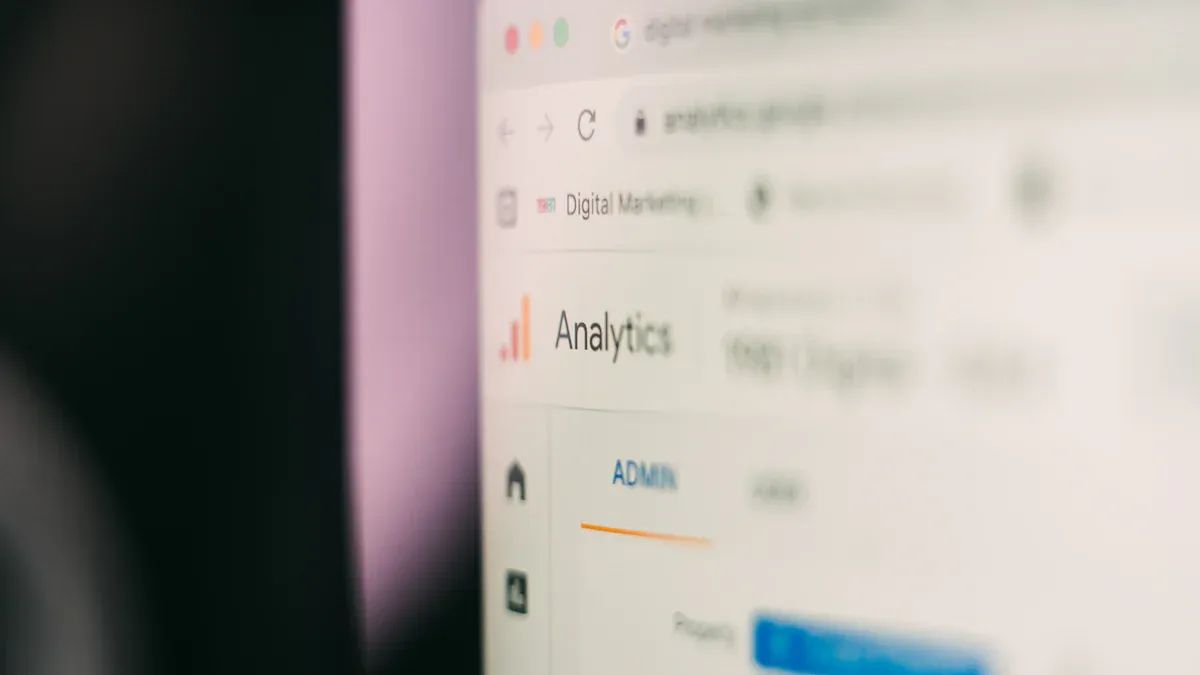Strategies for SEO Challenges in Multi-Location Businesses 2025

You face more complex SEO challenges than ever when managing a multi-location business in 2025. Each of your locations requires a tailored multi-location SEO strategy that balances local SEO best practices and brand consistency. You need to maintain consistency in your Name, Address, and Phone Number (NAP) across platforms, while also optimizing Google Business Profiles for each site. Automation and unique, localized content help you avoid duplication and boost your local SEO rankings. By maintaining consistency and following local SEO best practices, you ensure each location stands out on Google, even as you scale across multiple locations.
SEO Challenges in Multiple Locations

Operating across multiple locations brings unique SEO challenges that can impact your business’s visibility and growth. You must address nap consistency, avoid duplicate content, manage listings, protect your local reputation, and solve technical complexity. Each of these local seo challenges can affect your rankings and customer trust if not handled properly.
NAP Consistency
You need to keep your Name, Address, and Phone Number (NAP) consistent across every platform and directory. Nap consistency is one of the most important factors for local seo. When you have multiple locations, even small differences—like “Street” versus “St.” or using different phone numbers—can confuse both customers and search engines. Common nap consistency issues include:
- Multiple phone numbers for one location
- Name variations from rebranding or acquisitions
- Outdated addresses for closed or moved locations
- Different web addresses (URLs) for the same site
- Address variations beyond simple abbreviations
- Duplicate listings with conflicting information
These inconsistencies can cause Google to lose trust in your business, leading to lower visibility in local search results and Google Maps. Customers also lose trust quickly; 80% will stop trusting a business with inconsistent contact details, and 68% may stop using your services if they find incorrect information online. Regular audits and updates across all platforms help you maintain nap consistency and improve your local seo rankings.
Duplicate Content
Duplicate content is a major seo challenge for businesses with multiple locations. If you use the same text for each location page, search engines may struggle to decide which page to rank. This can reduce the visibility of all your location pages. Over 20% of business listings on Google My Business have errors, including duplicates. Businesses with duplicate listings are almost 50% less likely to appear in the top three search results. Customers also lose trust when they see repeated or conflicting information.
To avoid duplicate content, you should create unique, original content for each location page. Google’s algorithms reward pages that offer local relevance and value. Even small changes, like adding local testimonials or event details, can make each page stand out. Tools such as Copyscape and Google Search Console help you find and fix duplicate content issues. By investing in unique content, you boost both user experience and your seo performance.
Managing Listings
Managing listings for multiple locations can become overwhelming without the right strategy. You must claim and verify your business on major directories like Google Business Profile and Facebook. Keeping nap consistency across all platforms is essential. Regular audits help you spot outdated or duplicate listings. Centralized management tools allow you to update information for all locations from one dashboard, saving time and reducing errors.
You should also optimize each listing with keywords, high-quality images, and accurate business descriptions. Automation tools can help you monitor reviews, post photos, and audit listings. For businesses with many locations, hiring a specialized agency can provide expert support and ensure compliance with platform guidelines. This approach helps you maintain accuracy and consistency, which are key for local seo success.
Local Reputation
Your local reputation can make or break your seo efforts. With multiple locations, you face the challenge of managing reviews and feedback for each site. You can choose between a centralized approach, where your corporate team handles all reviews, or a local approach, where each location responds directly. Centralized management ensures brand consistency but may lack local insight. Local teams can respond faster and more authentically but need training to follow brand guidelines.
Negative reviews do not always harm your local seo if you handle them well. Responding quickly and professionally shows you care about customer service. A mix of mostly positive reviews with some negative ones appears more authentic to both search engines and customers. Monitoring reviews by location helps you spot trends and improve your services. Encouraging customers to leave honest feedback keeps your content fresh and supports your local search engine optimization.
Technical Complexity
Technical seo challenges increase as you add more locations. You must manage and verify multiple Google Business Profiles, keep nap consistency, and avoid duplicate listings. Each location needs unique, localized content to prevent thin or duplicate content penalties. Optimizing your site structure, store locators, and internal linking helps search engines crawl and rank your pages correctly.
You also need to tailor keyword targeting for each location and monitor performance across all sites. Automation tools and centralized platforms make it easier to manage data and updates. Technical issues like slow site speed, poor mobile experience, or inconsistent URLs can hurt your rankings and limit your ability to scale. By focusing on technical seo, you ensure each location page is optimized, user-friendly, and ready to compete in local seo.
Tip: Regularly audit your website and listings to catch nap consistency issues, duplicate content, and technical errors before they impact your rankings.
Consistency Across All Locations
Centralized Management
You need a centralized approach to local seo management when you operate across multiple locations. Centralized management helps you keep brand consistency and messaging uniform. You can streamline updates and monitor seo performance from one place. This method also lets you use specialized seo expertise from your main office, which improves the quality of your efforts.
Some key benefits include:
- Consistent branding and messaging for all locations
- Improved efficiency when making changes or updates
- Access to expert resources for better seo results
With centralized management, you avoid confusion and ensure every location follows the same high standards.
Automation Tools
Automation tools make it easier to manage seo for multiple locations. These tools help you save time, reduce errors, and keep your seo strategies consistent. Here is a quick look at some popular automation tools and how they help you:
| Tool Name | Key Automation Features | How It Improves SEO Consistency Across Multiple Locations |
|---|---|---|
| OTTO SEO | Real-time audits, AI-driven content, bulk deployments, multi-site dashboard | Automates tasks and ensures uniform optimizations across all sites. |
| Alli AI | On-page automation, bulk editing, AI suggestions, multi-CMS support | Applies consistent on-page seo changes across thousands of pages from one dashboard. |
| ClickRank.ai | Automated updates, AI content, Google Search Console integration, multi-site support | Uses real user data for tailored, consistent seo improvements at scale. |
| Surfer SEO | Automated content optimization, weekly tasks, NLP content editor, SERP analyzer | Maintains ongoing seo quality and improvements across many pages. |
| Semrush | Site audits, error alerts, rank tracking, backlink monitoring, client reporting | Supports consistent seo practices and communication across multiple business locations. |
Tip: Use automation to handle repetitive tasks so you can focus on strategy and growth.
Brand Standards
You must set clear brand standards to maintain consistency across all locations. Start by keeping NAP citations identical everywhere. Optimize each Google Business Profile with up-to-date information, quality photos, and customer reviews. Add local schema markup to your websites to help search engines understand your business details.
Other important standards include:
- Managing listings with the same business hours, descriptions, and promotions
- Creating location-specific content and metadata
- Building local backlinks and collaborating with local partners
- Using Google Business Profile to manage all locations in one place
By following these standards, you build trust and create a seamless experience for customers at every location. This approach supports scalable local seo and helps you grow your presence across multiple business locations.
Multi-Location SEO Content
Unique Local Pages
You need to create unique local pages for each of your locations. This approach forms the foundation of a strong multi-location seo strategy. When you optimize location pages with accurate contact details, local business schema, and location-specific content, search engines can easily identify each site. This helps your business appear in rich snippets and local pack results, which increases visibility and drives more organic search traffic to every location.
To build effective local pages, include:
- Contact information that matches each location
- Unique selling points for each area
- Local photos, videos, and testimonials
- Real-time inventory or service menus
- Community involvement and local events
A well-structured local seo strategy ensures that every location stands out and attracts the right audience.
Avoiding Duplication
Duplicate content can harm your seo and confuse both users and search engines. You must avoid using the same text across multiple locations. Instead, rewrite content to highlight what makes each site special. Use 301 redirects to guide visitors from old or duplicate pages to the correct ones. Implement canonical tags to show search engines the preferred version of your content. Add branch-specific details like Google Maps, staff photos, and local keywords to further differentiate your pages.
Tip: Customizable templates help you maintain brand consistency while allowing each location to showcase its unique features.
Localized Value
A localized content strategy adds real value for your customers and boosts your local seo. You should include local testimonials, partnerships, and FAQs that speak directly to each community. Embedding Google Maps on your pages makes it easy for users to find you and signals geographic relevance to search engines. Use location-specific images and highlight local landmarks to make your pages more engaging.
When you optimize local seo by tailoring area-specific strategies, you improve user experience and increase your chances of ranking higher in local search results. Participation in local events and collaborations also strengthens your brand and attracts valuable backlinks. Managing distinct content for all your locations ensures consistency and helps your business grow across multiple locations.
Google Business Profiles

Profile Optimization
You need to treat google business profiles as a core part of your local SEO strategy. Start with google business profile optimization by following a clear process. First, claim and verify each location’s profile. Next, update every field with accurate details. Use a detailed business description that highlights your unique services and values. Add a complete list of products and services for each location. Post regular updates about promotions or events using Google Posts. This keeps your google business profiles active and signals to google that your business is engaged.
Here are the most effective steps for google business profile optimization in 2025:
- Verify and update your business information, including NAP, hours, and amenities.
- Add high-quality photos and videos of your storefront, team, and products.
- Keep your services and product lists current.
- Share updates and promotions through Google Posts.
- Respond to customer reviews quickly.
- Manage the Q&A section with accurate answers.
Tip: Use a scheduling tool to post updates consistently. This shows google that your business is active and helps improve your local rankings.
Accurate Information
Accurate information in your google business profiles builds trust with both customers and google. You must keep your Name, Address, and Phone Number (NAP) consistent across all google business profile listings. Update your business hours, including holidays, to avoid confusion. Google rewards businesses that provide up-to-date and reliable information.
The table below shows how each field in your profile impacts local search rankings:
| GBP Field | Impact on Local Search Rankings |
|---|---|
| Business Name | Must match real-world name; helps with initial ranking. |
| Address | Ensures local relevance; affects proximity-based searches. |
| Categories | Defines business type; improves relevance to search queries. |
| Website | Linking to a strong site boosts rankings. |
| Hours | Accurate hours prevent penalties and help customers. |
| Reviews | More positive, recent reviews boost rankings and credibility. |
You should also use schema markup on your website to reinforce the signals sent by your google business profiles.
Photos and Reviews
Photos and reviews play a big role in the success of your google business profiles. Upload high-resolution, location-specific photos for each site. These images help your business stand out and attract more clicks on google. Encourage your local managers to add new photos often.
You need to manage reviews for every location. Ask happy customers to leave feedback and respond to all reviews within 24 hours. Thank customers for positive comments and address negative feedback professionally. This builds trust and shows google that you care about your reputation.
For multi-location businesses, review management software can help you monitor and respond to reviews across all google business profiles. Tools like EmbedSocial make it easier to keep track of feedback and maintain a strong brand image.
Note: Regularly updating photos and reviews keeps your google business profiles fresh and helps you rank higher in local searches.
Local Citations and Links
Citation Management
You need a strong citation management process to support your local seo strategy. Citations help customers and search engines find your business. Start by keeping your Name, Address, and Phone Number (NAP) consistent across all platforms. Inconsistent NAP details confuse both google and your customers. Use tools like Yext, BrightLocal, or Whitespark to automate citation building and monitor your listings. These tools let you enter your business information once and push it to many directories, saving time and reducing errors.
- Keep a centralized database for all your locations and their NAP details.
- Audit your citations often to find and fix mistakes or duplicates.
- Focus on quality directories, such as local chambers of commerce and city-specific sites.
- Optimize your google business profiles for each location with up-to-date information and photos.
- Encourage customers to leave reviews on google business profiles and other platforms.
- Balance manual checks with automation to maintain control and efficiency.
Tip: Businesses that follow these steps often see a 20-40% increase in foot traffic and a 25-35% rise in online inquiries.
Avoid common mistakes like ignoring reviews or letting NAP details drift out of sync. Consistent citations build trust with google and help you climb in local search rankings.
Local Link Building
Local link building gives your local seo strategy a boost by connecting your location pages with trusted local sources. You can earn valuable backlinks by sponsoring community events, partnering with local businesses, or working with local media. These links show google that your business matters in the community.
- Build relationships with local organizations and business associations.
- Collaborate with local influencers or media outlets for coverage and backlinks.
- Create location-specific pages with unique content and local keywords.
- Optimize your google business profiles and manage reviews for each location.
- Focus on quality over quantity—one strong local link can make a big difference.
A boutique fitness studio improved its organic traffic by 25% in four months by sponsoring local events and building community partnerships. Local backlinks drive qualified traffic and help each branch rank higher in its area. This approach supports hyper-local targeting, which is key for “near me” searches. When you optimize local seo with strong citations and links, you help every location stand out on google.
Technical SEO for Multiple Locations
Site Structure
You need a clear site structure to support your multi-location seo strategy. Start by creating separate pages for each location. This helps search engines and users find the right information quickly. Optimize each page for both the city and state. Use a folder structure that shows your locations, such as /city1, /city2, or /council-area1. Avoid repeating service names in URLs if your domain already includes them. If you plan to add more services later, include them in the URL only when needed. You can also create landing pages for suburbs or smaller areas with unique content. Hide these from navigation but include them in your sitemap so search engines can index them.
Tip: Fully optimize your current location pages before expanding to new areas. This ensures you build a strong foundation for your multi-location seo efforts.
Schema Markup
Schema markup helps search engines understand your business details for each location. Add structured data to every location page. Include your business name, address, phone number, and hours. This makes it easier for customers to find the nearest branch and improves your local search rankings. Use LocalBusiness schema for physical stores and Organization schema for businesses without a storefront. Add review and FAQ schema to show ratings and answer common questions. Link each location’s schema to your main business using the “department” property. Update and validate your schema regularly to keep your information accurate.
| Schema Type | Purpose |
|---|---|
| LocalBusiness | Identifies each physical location |
| Organization | Represents the overall business |
| Review | Displays star ratings and reviews |
| FAQ | Answers common customer questions |
| WebSite | Supports your online presence |
Mobile and Speed
Mobile optimization is critical for multi-location seo. Most people search for local businesses on their phones. Make sure your website uses responsive design and loads quickly. Google uses mobile-first indexing, so a mobile-friendly site helps you rank higher. Fast load times reduce bounce rates and improve user experience. Compress images, use caching, and minimize code to boost speed. Add click-to-call buttons and interactive maps to help users contact or find your locations easily. Regularly check your Core Web Vitals, such as Largest Contentful Paint and Cumulative Layout Shift, to keep your site performing well.
Note: 82% of smartphone users search for nearby shops. A fast, mobile-friendly site helps you capture these local customers and supports your multi-location seo goals.
Tracking and Scaling
Analytics Setup
You need a strong analytics setup to track your multi-location seo performance. Start by connecting each location’s website and Google Business Profile to Google Analytics and Google Search Console. This gives you access to real-time data for every branch. Use location-based filters and tags to separate data by city or store. This helps you see which locations perform best and where you need to improve your local seo strategy.
Here are the most important metrics to monitor for each location:
| Metric | Description | Importance for SEO by Location |
|---|---|---|
| Google Business Profile (GBP) Insights | Measures local visibility and user engagement through direct and discovery views, website interactions, and photo views. | Reflects how often the business appears in local searches and maps, indicating local search presence and engagement. |
| Local Pack Rankings | Tracks position and frequency in the local 3-pack for target keywords across different geo-locations. | Higher and frequent appearances increase visibility and potential foot traffic, showing local search dominance. |
| Citations | Consistency and quality of business listings in authoritative local directories. | Builds trust with search engines and users; a fundamental ranking factor for local SEO. |
| Local Keyword Rankings | Rankings for queries like “near me” and “[service] in [location]” including local long-tail keywords. | Indicates how well local search intent is captured and competitiveness in location-specific queries. |
| Organic Traffic | Traffic segmented by country or location, including sub-metrics like traffic sources and device types. | Provides an overall indication of SEO results and helps understand audience behavior by location. |
Tip: Set up custom dashboards in Google Analytics to compare performance across all your locations.
Performance Monitoring
You must monitor your seo performance for each location to spot issues and find new opportunities. Use rank tracking tools to check keyword rankings in every city. SEO auditing tools help you find technical problems like broken links or slow pages that may affect only certain locations. Backlink and competitor analysis tools show you where your competitors get their links and help you plan your own strategy. Content optimization tools give you ideas to improve your pages for local search intent.
- Rank tracking tools monitor keyword rankings for each location, helping you find ranking changes and keyword gaps.
- SEO auditing tools detect technical issues such as broken links, slow speeds, and indexing errors on location pages.
- Backlink and competitor analysis tools reveal local backlink opportunities and competitor strategies.
- Content optimization tools suggest ways to tailor content for each area, improving relevance and rankings.
- All-in-one SEO platforms combine these features, making it easier to manage and report on multiple locations.
- Integration with Google Search Console and real-time monitoring tools helps you fix location-specific problems quickly.
Note: Real-time monitoring tools like ContentKing and AccuRanker let you respond fast to changes in your Google rankings or technical issues.
Scaling Strategies
To scale your multi-location seo, you need a plan that works for every branch. Start by using unique phone numbers and consistent business names for each location. Optimize your Google Business Profile listings by uploading spreadsheets for bulk verification and filling out detailed, location-specific information. Create location pages that target the right geographic areas based on customer proximity and keyword research.
- Write unique, location-specific content for each page, including address, hours, maps, specials, and local keywords. Avoid duplicate content.
- Monitor and respond to reviews quickly using reputation management tools that connect with Google Business Profile, Yext, and Yelp.
- Build local links by joining directories, chambers of commerce, and guest posting on local sites.
- Develop a content calendar with both brand-wide and location-specific topics to avoid keyword cannibalization.
- Track location-specific metrics like keyword rankings, conversion rates, and competitor activity for targeted improvements.
- Use scalable local seo workflows and templates to balance brand consistency with local customization.
- Continuously adapt your local seo strategy based on data from Google Analytics, Google Search Console, and real-world results.
Success Story: Bell Tech Pros increased calls by 362.5% after using an integrated multi-location seo approach. CitiScape Builders saw a 1941% traffic jump in 30 days by tracking and adapting their strategy.
You can achieve strong SEO results for every location by using a unified yet localized approach. Choose a scalable management model that balances brand standards with local flexibility. Keep your NAPW details consistent everywhere. Create unique content for each location and optimize Google Business Profiles. Use structured data and local keywords. Monitor your results and adapt as you grow.
Quick Checklist:
- Build unique, local pages with tailored content
- Keep NAPW details identical across platforms
- Optimize Google Business Profiles for each site
- Use structured data and local keywords
- Track performance and update your strategy regularly
FAQ
What is the most important SEO factor for multi-location businesses?
You must keep your Name, Address, and Phone Number (NAP) consistent everywhere. This builds trust with Google and your customers. Consistency helps your locations show up in local search results.
How do you avoid duplicate content on location pages?
Write unique content for each location. Add local details, such as staff names, events, or customer reviews. Use different photos and highlight what makes each site special.
Should you use one website or separate sites for each location?
You should use one main website with dedicated pages for each location. This approach keeps your brand strong and makes it easier to manage SEO. Google also prefers this structure.
How often should you update your Google Business Profiles?
Update your Google Business Profiles at least once a month. Add new photos, respond to reviews, and check your business hours. Frequent updates show Google that your business stays active.
What tools help manage SEO for multiple locations?
Tools like Yext, BrightLocal, and Semrush help you manage listings, track rankings, and monitor reviews. These platforms save you time and reduce errors when handling many locations.
See Also
Effective SEO Content Sharing Techniques For Marketing Growth
2024 B2B SEO Approaches To Target Key Decision Makers
How To Use Ethical Link Swaps For SEO Mastery

